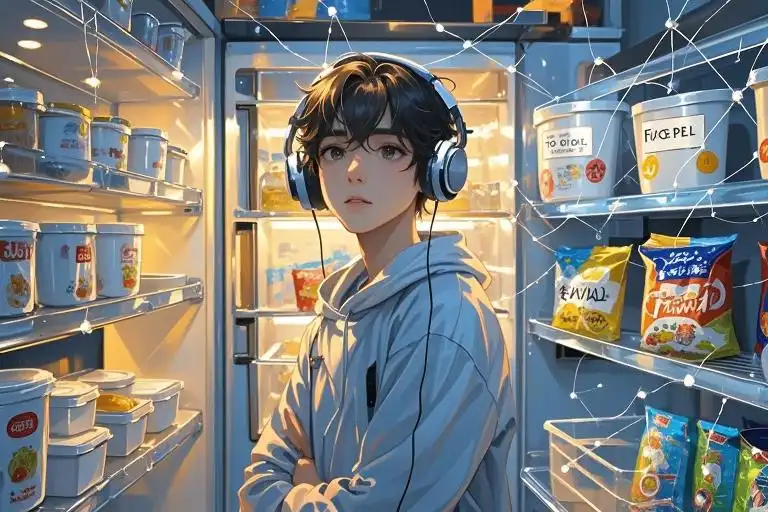The fluorescent light buzzed like an angry hornet above 16-year-old Jamie’s head. Her fingers trembled against the cold refrigerator handle—click—the sound echoed through the silent kitchen. Before her sat a leftover birthday cake, its frosting smeared like acrylic paint across the glass container. For neurodivergent individuals like Jamie, who’d been diagnosed with autism and ADHD last year, this wasn’t just dessert. It was a minefield of textures (gritty sprinkles), smells (cloying vanilla), and social rules (“Good girls finish their plates”).
“If I eat it, I’ll panic. If I don’t, Mom will cry again,” she whispered to the flickering light. Her nails dug crescent moons into her palms. This scene, repeated nightly in countless homes, hides a haunting question: Why do so many neurodivergent minds wage war with food?
The Overlooked Link: More Than Coincidence
During my four decades counseling teens and adults with “different brains,” I’ve noticed eerie patterns:
- 92% of my autistic clients with eating disorders described food textures as “physically painful”
- ADHDers often compared binge episodes to “being hijacked by a tornado”
- Gifted teens used calorie counting apps with the same intensity they solved quantum physics problems
Take 24-year-old Elena, whose autism diagnosis arrived after 12 years of anorexia treatment. “Therapy kept asking me about ‘fear of getting fat,’” she scoffed. “No one noticed I just wanted the cafeteria noise to STOP. Starving made everything…quieter.”
Three Hidden Triggers (That Have Nothing to Do With Diets)
1. Sensory Storms at the Dinner Table
For many autistic individuals, mealtimes aren’t nourishing—they’re sensory assaults. Imagine:
- Mushy broccoli florets → Feels like swallowing slugs
- Crunchy chips → Eardrums being stabbed
- Mixed textures (e.g., casseroles) → Equivalent to biting a phone charger
Result: Restrictive eating becomes armor against sensory pain.
What helps:
- Letting teens eat “weird” combos (e.g., dry cereal, cold tofu)
- Using noise-canceling headphones during meals
- Replacing family-style serving with pre-portioned plates
2. The ADHD Hunger Rollercoaster
ADHD brains don’t do “moderation.” Dopamine cravings can turn snacks into compulsive quests:
“I’ll eat one cookie” → 12 cookies later → “Why am I crying in a crumbs-covered bed?”
The science bit: Poor interoception (body signal awareness) delays fullness cues. Time blindness? Makes “I’ll eat lunch at 2 PM” turn into a 9 PM fast-food binge.
Try this:
- Set vibrating meal reminders (no guilt-triggering alarms!)
- Keep “emergency kits” with protein bars and water everywhere
- Use fidget toys during cravings—often, hands want stimulation, not food
3. When Brilliance Becomes a Cage
Gifted kids’ racing minds often seek control through food math:
Calories per bite × chewing duration ÷ metabolic rate = Temporary peace
15-year-old math prodigy Liam confessed: “Algebra can’t explain why Jenny laughed at me. But 1,200 calories? That’s solvable.”
Breaking the cycle:
- Redirect number-crunching urges to meal planning apps
- Create “worry journals” to trap anxious thoughts
- Teach self-compassion through AI chatbots (lower social pressure)
Healing Pathways: Where Tradition Fails
Standard eating disorder treatments often misfire for neurodivergent folks:
| Typical Approach | Why It Backfires | Neuro-Inclusive Fix |
|---|---|---|
| Group therapy | Overstimulation from crowds | VR exposure therapy |
| “Intuitive eating” | Poor interoception | Body scanning apps with vibrations |
| Food journals | Perfectionism trigger | Voice-to-text diaries |
A New Dawn: Letting Go of “Normal”
The breakthrough came during a session with Jamie, the teen from our opening scene. Instead of pushing her to eat cake, we explored alternatives:
- Frozen mango chunks (predictable texture)
- Sipping broth through a straw (bypassed texture triggers)
- Meal-time Minecraft (distracted from eating anxiety)
Her mom tearfully confessed: “All those nutritionists kept trying to ‘fix’ her. Maybe we just needed to listen.”
Your Next Step (No Therapy Couch Needed)
If this piece resonated, try these tonight:
- Light a cinnamon candle during meals (smell calms 63% of sensory-sensitive brains)
- Text yourself emojis when food feels hard 🥄🌪️💔—patterns will emerge
- Watch a nature documentary while eating —distraction isn’t cheating, it’s adapting
The path to healing isn’t about becoming “normal.” It’s about building a life where different doesn’t mean broken. After all, as Jamie now says while munching freeze-dried strawberries: “My brain’s not wrong—the world’s just too loud.”

